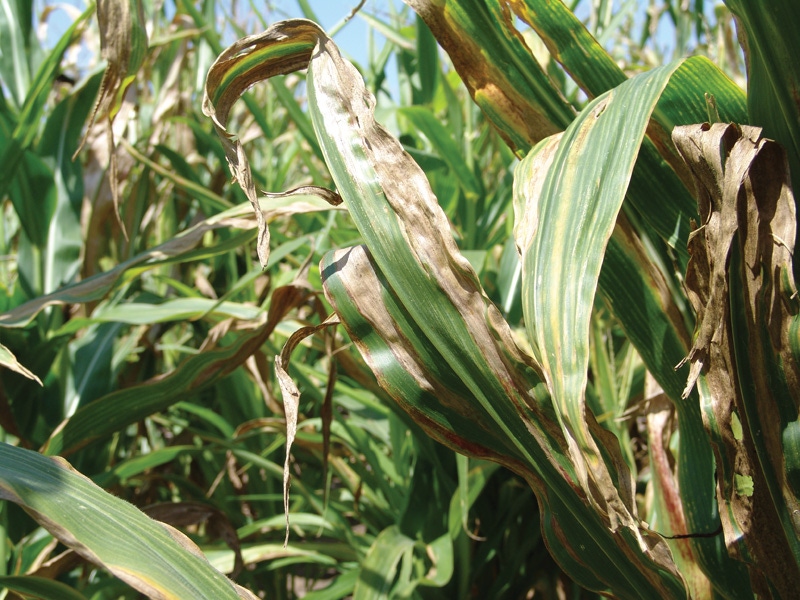July 5, 2012

Although Goss’s wilt has not been detected in any corn samples submitted to the University of Illinois Plant Clinic this year, U of I plant pathologist Carl Bradley said that the disease may be present in the state. The disease is most likely to appear in fields that had severe Goss’s wilt in 2011 and that were planted to corn again in 2012.
Goss’s wilt is a bacterial disease of corn caused by the bacterium Clavibacter michiganensis subsp. nebraskensis (Cmn). It was detected in several Illinois counties in 2011.
“Identification of Goss’s wilt can be tricky for people who are not too familiar with the disease,” said Bradley. He recommends:
Evaluating affected leaves to determine if the symptoms and signs match. Goss’s wilt leaf lesions will have a wavy margin, and some water soaking will occur. Dark spots inside the lesions (often referred to as “freckles”) also should be present. The affected areas may also appear shiny due to exudates of the bacterium on the leaf surface. In some cases, bacterial exudates may resemble sticky maple syrup spots.
Having a plant diagnostic lab such as the U of I Plant Clinic (http://web.extension.illinois.edu/plantclinic/) evaluate the affected leaves for bacterial streaming. Leaf tissue is cut and placed on a drop of water on a microscope slide and checked for bacterial streaming under a microscope. The presence of bacterial streaming indicates that the leaves have a bacterial infection.
An immunostrip test may be conducted to determine if the Cmn bacterium is present in the leaves that have wilt symptoms and bacterial streaming. This test is available from Agdia (Elkart, Ind.) and is designed specifically to detect bacterial canker in tomato, which is caused by a similar bacterium. The strip also reacts to other species of Clavibacter such as Cmn, the Goss’s wilt bacterium.
“False positives are very possible when this is the only step used to identify Goss’s wilt,” Bradley said. “For an accurate Goss’s wilt identification, it is extremely important to first check that the symptoms match and that bacterial streaming is present.”
You May Also Like




